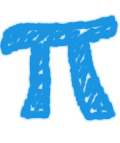Population dynamics and cellular automata for the description of criminality
Date: Thu, Sep 20, 2012
Location: IRMACS Center, Simon Fraser University
Conference: Hot Topics in Computational Criminology
Subject: Social Sciences, Applied Mathematics
Class: Scientific, Applied
Abstract:
In this paper we study the dynamics of a population where the individuals can either be contributors (tax payers) or no contributors (tax evaders or cheaters). We introduce a 2D cellular automaton on which the probability of transition from one of the above states to the other is the sum of the local effect and of the global field effect. The model also includes the policy that allocates a fraction of the budget to fight tax evasion. This scheme allowed us to simulate the cases in which inhomogeneous strategies in contrasting tax evasion is applied in a region and the case in which cooperative policies are adopted by neighbor societies.



